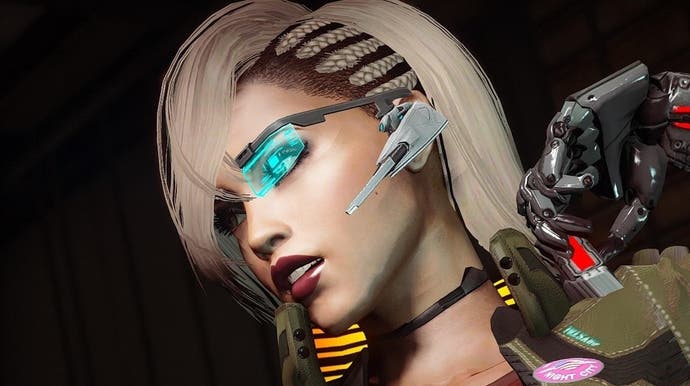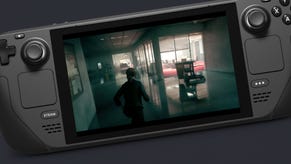The new Cyberpunk 2077 video looks great - but the Gamescom demo was even better
Plus: our first look at the PC's ray tracing features.
A year after its initial gameplay debut, CD Projekt RED treated Gamescom 2019 attendees to a new slice of Cyberpunk 2077 action, with Digital Foundry on site to check it out. The lack of assets at the time prevented us from sharing many of our thoughts, but the good news is that CDPR followed up on the event by releasing a 14-minute video showing some - but certainly not all - of the content. What we have on display here continues to impress, but it is somewhat surprising to see a presentation that isn't a match for the Gamescom or E3 demos we saw in person.
Some have complained about the lack of detail and definition in the latest demo, despite CDPR supplying a 4K video encode to YouTube's servers and there does seem to be an explanation for this: to our eyes and indeed our pixel counts, the new video footage is running at 1080p resolution before being upscaled to 4K. However, it is still operating at 30 frames per second.
It's a bit of an oddity, as we saw the game running in real-time on a massive LED or LCD display, similar to the Gamescom 2018 showing - which was running at native 4K. While we can't confirm pixel counts for sure, our showing was clearly running at a much higher resolution. Interestingly, the drop in resolution in the video has a big impact to the quality of the overall presentation.
The clarity and detail in the artwork in Cyberpunk 2077 is one of the game's best features, but behind a heavy post-process pipeline and temporal anti-aliasing, the '1080p' video feed doesn't come close to matching the precision of what we saw. If there's a lack of buzz surrounding the new video, part of that may be down to some pretty severe cuts to content. Similar to last year's demo, event attendees got to sample around an hour of content - and the 14-minute precis we have here doesn't really do it justice.
With that said though, Cyberpunk 2077 enjoys some clear visual upgrades over last year's demo, whether you're using a ray tracing-enabled GPU or not. For starters, reflection quality is vastly improved. This aspect of the game doesn't seem to be ray traced, relying instead on screen-space reflections instead - seen in The Witcher 3 but curiously omitted from last year's Cyberpunk demonstration, which seemed to rely on direct lighting and cube maps to approximate the effect. SSR in the new demo looked really nice in puddles and metal work, and reasonably robust - which is no mean feat based on some of the dodgy implementations we've seen (Resident Evil 2 Remake, for one).
A second type of reflection also appears to be in place - a render-to-texture technique that sees CDPR re-render the scene from another perspective before mapping that onto mirrored surfaces. It's a really heavy, computationally expensive way of producing accurate reflections and obviously they're not used on every shiny surface, but where they do impress where they are deployed. We're told that this demo is running on an RTX 2080 Ti with ray tracing features enabled, so if reflections aren't hardware-accelerated, how is DXR put to work? The approach is reminiscent in some ways of 4A Games' work with Metro Exodus, where RT is used for a more striking effect from emissive light sources - good for neon then, a signature component of Cyberpunk's visual make-up.
What this means is that direct and light from these emissives has a much more accurate effect on the lighting within the game world, from massive neon ad hoardings down to the LED embellishments on V's collar. The sky itself is also treated as an emissive source, leading to some beautiful results.
If a single RTX 2080 Ti is indeed capable of delivering 4K visuals with ray tracing features enabled at a fairly solid 30 frames per second (we noted some minor dips - but remember we are far out from release), the overall outlook for Cyberpunk 2077 performance is looking pretty good. And with that in mind, we'd really hope to see the studio consider adding in further ray traced effects. Remedy's Control has really set the standard with its 'tiered' approach to RT support. All features are available, but to run all of them requires monstrous hardware in the here and now - but in the future? Well, the faster PC hardware gets, the more viable these features become. Indeed, CDPR has experience of this already: Nvidia HairWorks had a drastic hit to performance back in the day, but it's certainly viable on today's hardware.
Overall, Cyberpunk 2077 remains just as impressive today as it did at its debut, and its technical refinements are obviously welcome. But by extension, this does mean that the biggest question of all remains unanswered - just how well is a game of this complexity going to run on current-gen consoles? The demo once again highlights an immense level of scale, detail and density that we'd associate with a next-gen game. In a world where The Witcher 3 runs on Switch, anything's possible, but regardless, we really can't wait to check this out across all formats.










